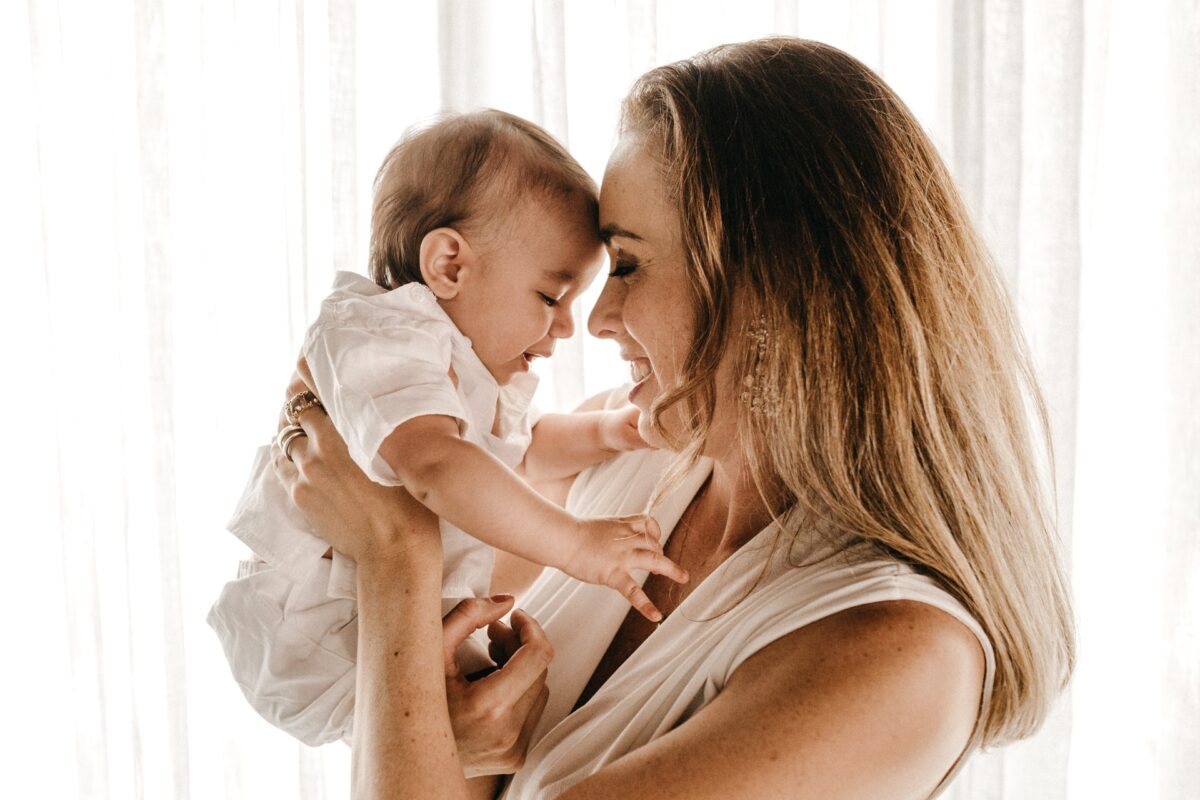Most parents wanting to grow their families through adoption are hesitant because they have far more questions than available answers. But as time goes by, they acquire more information on the topic and get more confident of the path they will choose. This article will look at the key things to consider when adopting a child to help future parents prepare for what is coming their way.
Where to Start If You’re Considering Adoption?
Each adoption path is unique, depending on what the potential adoptive parents expect at the end of the process. First, they need to decide some critical issues regarding the location of adoption (domestic or international) and who they want to work with on the adoption, for example, an agency, a private attorney, or a consultant.
Once those things are fully considered, there is a defined procedure each family needs to go through. Here’s how to get started adopting a child and what other steps to take to grow the family successfully.
What’s the Process for Adopting a Child?
If you choose to work with an adoption agency, make sure they are licensed. Then, research several of them in your area and talk to other adoption professionals to have more options.
To be approved as adoptive parents, each family goes through a Home Study. It’s a standard procedure where a social worker inspects the house the adoptee will live in. It includes a series of interviews with all family members and assessing an adoption packet provided by the parents. The paperwork might consist of the following:
- medical forms: history of illness and life expectancy;
- criminal background check;
- child abuse background check;
- reference letters;
- financial information: copies of tax returns, income, expenses, monthly budget, etc.
After the Home Study is completed, the family must wait until they’re matched with a child. Basically, the agency will advertise the adoptive parents to the birth parents. After the matching is successful, the adoptive family must finalize the adoption legally in court.
Things to Consider Before Adopting a Child
Adoption, like any other serious decision, must be approached consciously. Future parents must get acquainted with the many aspects and challenges they will face. They must understand their motivations and expectations for the upcoming life event and be prepared to fulfill the role of adoptive parents. So, here’s what to know about adoption to prepare for it to the best of your abilities.
1. Adoption is a highly responsible decision that should be well-thought
Before moving from an inspiring desire to welcome a new member to the family and learn all about adopting a child, the pre-adoptive parents should make sure they genuinely want it and are ready to face multiple complications in the process. First of all, they must clearly understand why they need it. An honest answer to this question will help them uncover the real motives that drive them in their pursuit to adopt a child.
Hidden and poorly understood motives can cause many difficulties in accepting and raising a child. For example, such a reason as the desire to save a child from an unfavorable situation appears very noble at first glance. But mere altruism is not enough to parent a child and deal with the accompanying challenges.
Feeling lonely, social pressure, or saving a failing marriage by adding a new family member are also wrong reasons for adoption. A baby shouldn’t be a remedy to particular life issues. On the contrary, each adoptive parent should assess their abilities and readiness to go through ups and downs and stay committed to giving the child the best life possible.
2. Thorough research on adoption is critical
Getting an idea of what adopting parenting looks like before expressing interest in adoption can make this path much more manageable. Reading books or blogs and talking to other adoptive parents will make a person more equipped and help get a clearer picture of what awaits them in the process. This information will also help understand if the adoption is something the pre-adoptive parents are ready to handle.
Another thing the future parents would need to look into is primary ways to adopt a child. There are several of them. A person can either choose an adoption agency in their state or go with a lawyer. Some parents choose an adoption attorney because the agency turned them down for some reason. Others prefer agencies because they provide more pre-and after-adoption support, including education and training.
Since everyone’s circumstances and needs regarding adoption are different, the parents should look into as many resources as possible and not be afraid to ask questions when they come to the agency or an attorney.
3. Not all routes to adoption are suitable for everybody
Before jumping into the adoption process, the parents should decide what kind of adoption they want. Essentially, there is domestic adoption and international adoption. Domestic adoption also has types – foster care and infant adoption. All the routes have pros and cons depending on the intentions and desires of pre-adopted parents. For example, if they want to adopt a baby, they should probably go with infant adoption because children in foster care are often of school age (at least six-eight years old).
Many American couples choose to take in children from abroad because there are fewer chances for the child’s birth parents to disturb their lives someday. Plus, there are a lot of children outside the United States waiting to be adopted, especially in Asia and Eastern Europe. Statistical data reveals that the top countries for international adoption in 2020 were China, India, Ukraine, South Korea, and Colombia.
A few other essential things to know about adoption is whether you’re ready to stay in contact with the child’s biological parents after the placement and how open you want these relationships to be. In recent years, open adoption has become a trend in the USA, when the birth parents and adoptive families exchange some information about the child, talk on the phone and even meet from time to time. However, no two open adoptions are alike, and there is always room for negotiations. That’s why it’s critical to address all the expectations and limitations beforehand.
4. Adopting a baby is different from taking in an older child
The vast majority of parents seek to adopt a newborn baby rather than an older child. The primary reason is that they don’t wish to deal with a foster child’s traumatic experience. But babies also come with several challenges. Let’s look at some special considerations when adopting a baby.
Adopting an infant is generally more demanding than raising an older child. For one, babies require a lot more care, such as frequent feeding, diaper changing, adjusting to their sleeping schedule, etc. Secondly, the parents looking to adopt a healthy baby can’t know that any health issues won’t manifest in the future. On the contrary, when they adopt a kid aged 6-8 years old, they can look through their medical history and decide if they’re capable of providing for this child’s particular needs.
Another critical concern is the cost, which we will cover later. In a few words, infant adoption is much more expensive than adopting a child from the foster care system. So, if money and time are the critical issues, adopting older children is a better choice to expand the family.
5. The child and the adoptive family need time to adjust
Many adoptive parents are sure that after the process is over and the foster child starts living in a better loving family, all traumatic events will be left behind. Unfortunately, it’s only an illusion and cannot be further from the truth unless you adopt an infant right after birth. Older children already have traumatizing experiences caused by tragic life turns that brought them to the adoptive placement. Some kids were abandoned by their parents, mistreated and abused, and others spent a long time in foster homes.
It all takes us to one important conclusion: the families and kids need time to adjust to each other. Some achieve the balance in six months, while others spend a year or so breaking the ice. The child needs to get used to new social roles and find a place in the adoptive family. He or she should get acquainted with the mom and dad and the extended family – siblings, cousins, grandparents, etc.
Other family members also need time to readjust. They will have to reconsider priorities, allocate responsibilities and time for organizing everyday life, and many other things related to a new family member.
6. The costs vary drastically depending on the adoption type
One of the most daunting questions concerning pre-adoptive parents is what it takes to adopt a child financially. The cost mostly depends on the type of adoption. International is the most expensive, while the state largely reimburses domestic adoptions through foster care.
Domestic private adoptions (adoption of a baby locally in the U.S. with the help of an attorney) are slightly more expensive and start from $2,000, going up to $10,000. It includes the attorneys’ fees, the traveling costs, medical expenses to cover for the biological mother before she gives birth to her child, etc.
Then, there is a domestic agency adoption. It’s pretty much the same as the previous type, except the parents go with an adoption agency instead of an attorney. Going through adoption with the agency is more costly than hiring an attorney. In this scenario, the costs will likely include the application fee, the Home Study, legal fees, advertising the pre-adoptive parents to potential birth mothers, etc.
On the whole, the families have quite a few options for all budgets, so the cost shouldn’t be the one thing to prevent families from considering adoption in the first place.
7. Not all child’s behavioral problems are the result of the adoption
It’s not uncommon for adoptive parents to anticipate many adjustment problems after the child’s placement. As a result, they tend to consider even the slightest behavioral issues with their new kid as something connected to their trauma. Although adopted children are overrepresented in mental health care, according to research, their past is not always the primary reason for the deviant behavior.
Even biological children sometimes behave horribly. For example, they do not obey their parents, question their authority, or argue. And such deviant behavior is normal if it doesn’t become a daily norm. Thus, parents should pay attention to the child’s age and understand what behavioral characteristics may appear in a particular period of their life.
In any case, if there are persistent severe deviations in children’s behavior, the parents should seek help from a specialist. For instance, many adoptive agencies offer weekly consultations and have a telephone support line.
Final Thoughts
Adoption is a challenging yet gratifying process. It requires a lot of research, financial preparation, paperwork, and waiting. Also, the families should closely inspect their expectations from adoption and primary motives and identify their ability to provide the best conditions for the upcoming child. No one says it will be a cakewalk, but the result is worth every effort.
About the Author
Natalie Maximets is a certified life transformation coach and a contributing writer at OnlineDivorce.com, covering various family relationships topics, parenting, and mental health. She is proficient in CBT, Trauma Recovery, Mindfulness Meditation, and Wilderness Therapy.


